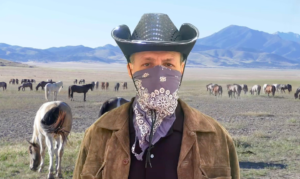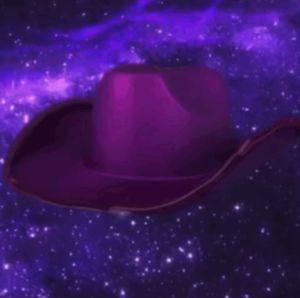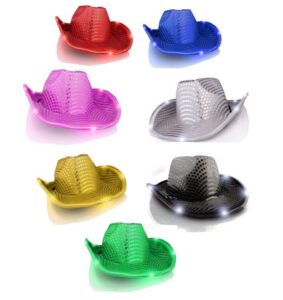![7-colors-LED-flashing-cowboy-hats-965x1024[1]](https://blinkee.com/blinkeeblog/wp-content/uploads/2020/08/7-colors-LED-flashing-cowboy-hats-965x10241-1.jpg)
From Fur to Felt and the Future; The Hat That Keeps Winning the West
You don’t have to be American to know what a Cowboy Hat is. It’s the symbol of the Wild West, the sign of honest work and hard labor, a farm hand’s best friend next to his horse and his herding dog. It’s a hat that speaks volumes to its owner and the ideals they may carry. A hat that the whole world knows and associates with the deep rooted American values.
But why? It’s just a hat. Why all the flair? Why all the attention? What did one hat do to become so iconic?
The history of the cowboy hat is a relatively recent one in terms of human history, but serves as one of the earliest examples of modern Western fashion culture. It set a benchmark in many ways for the ideal nature of what hats can do and what they can symbolize through appearance and material. The head doesn’t carry the hat, the hat carries the ideas that rest within the head. Just like the stovepipe top hat associated with the burgeoning rich monopolists, the cowboy hat has endured through its cultural significance to define a certain kind of person.
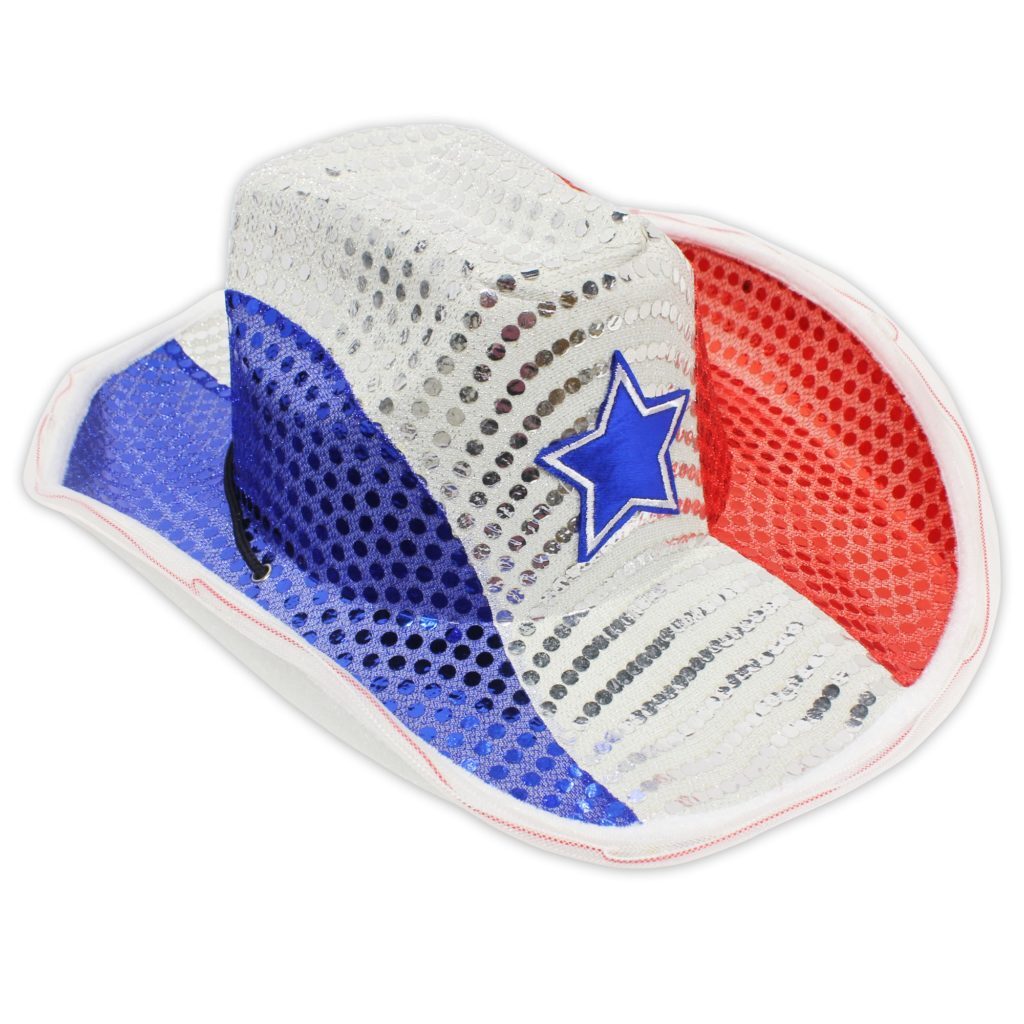
The Wild West of Fashion
The Westward Expansion in the United States was an historic period. Settlers set out from the safety and establishment of the east coast cities to make new towns, new communities and establish new trade with the resources of the rest of the nearly unmapped continent. This was the start of the Wild West, where the people who went out to settle the lands didn’t necessarily bring a police force with them.
If someone wanted a house they had to cut down the trees for lumber and build it themselves. The more people who came, the more helping hands there were to set things up. But not everyone was out to make an honest living. This was a period of lawlessness as well, which created the mythology of the gunslingers and highwaymen that ruled the lands with lead and iron.
Much of the action took place near the border, in the unruly state and once-country of Texas that tore itself away from the control of Mexico and into the union of American states. This is where the origins of the Cowboy and his iconic Hat began, first with the introduction of the Mexican migrants and soldiers.
The Cowboy hat is often attributed as an altered design of the traditional Mexican sombrero. At first, there was no cowboy hat, just as there were no traditional “cowboys” as many people know them. The term itself originates from ranch hands who rode horses all day to keep watch over cow herds that grazed in the open plains. They protected the cattle from predators, poachers, bandits and used lassos to keep the beasts in line. It was hard work all day under the hot southern sun, and they needed shade to protect their heads from burning.
The wide brim design was useful in keeping the face and neck shaded without compromising vision with a drooping cover. The native sombreros were often made of braided straw, which made them durable but lightweight and breezy. However, the brims of these hats were too wide and they would shift and turn. A chin strap was needed to keep them in place too, as the material couldn’t stretch or squeeze to fit onto the head as easily. It made conditions fairly awkward to work in.
The American western settlers were already used to hats. Hats were the standard of fashion back in the day. The way we have mid-fades and man buns that now as fashion statements, back in the mid 1800s it was down to variations of hats. Not wearing a hat, no matter what the occasion, was seen as not caring about appearance. Professional working men had to have hats, even if the sun wasn’t shining, to prove they were thinking about themselves from head to toe.
When the settlers moved west they brought their entire homes with them, including the clothes on their backs and the hats on their heads. The cowboy hat did not exist yet, but bowler hats did. The simple round-topped and short-brimmed hats were not the most ideal for the hot and sunny weather. They were more fair-weather gear for keeping the top of the head cool with a minimal amount of shade cast over the forehead but above the brow. For many, it was the only hat they had, despite the grueling conditions.
Anything went in those days, but function was preferred over fashion. If it could be worn it would be worn, and that went for everyone. Wider dresses and looser tops became more popular among women, and men wore anything that wasn’t caked in dirt and dust. Leather was too hot to wear all day but felt just right closer to nightfall. It wasn’t until 1865 when the first true Cowboy Hat was manufactured by the father of all Cowboy hats, a man named John Batterson Stetson.
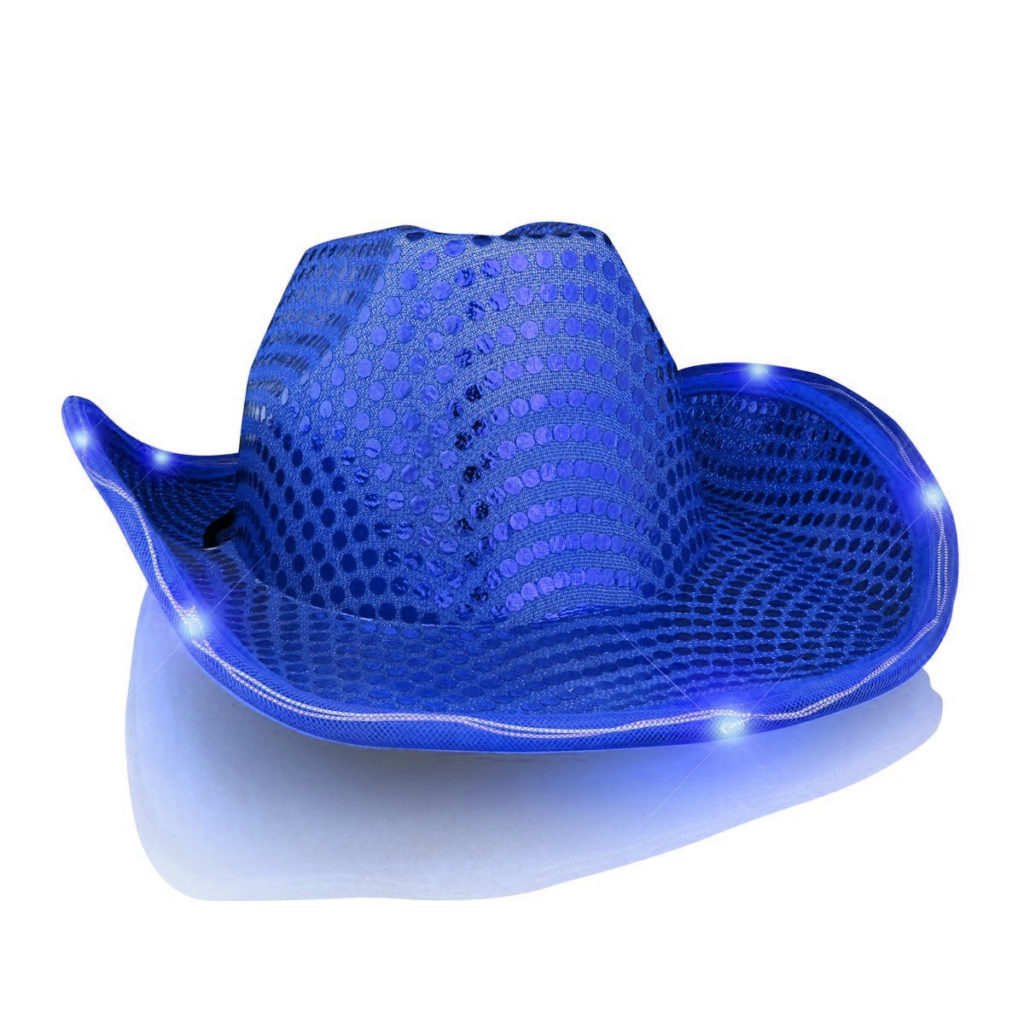
Boss of the Plains
J. B. Stetson was a hatter by trade, a man whose keen eye that analyzed the world always wandered up to the tops of people’s heads. It was his fathers business and became his business in adulthood. However, a certain tragedy struck that sent him on a journey. He was diagnosed with tuberculosis and decided to spend what may have been his last few years exploring the mysteries of the West.
From New Jersey to Nevada, he made a long trek through rails and horse rides to see how people were living outside the city environments he was so familiar with. He saw the rough ingenuity of the American settlers and was impressed by their hard lived lives. But one thing stood out to him more than any. He remarked on just how poor their hat game was.
The settlers just had whatever they left with. That meant the personal affects of their former jobs, and those jobs were not nearly the same as what their lives demanded. Most people had simple, basic hats, wool derbies and straw braided caps, military caps and the odd raccoon skin hat were the only fashion available. There were no choices but to make new hats, and most of those came from animal hides, which meant insulated sweat-provoking leather. And, more often than not, fleas.
Stetson knew the settlers could have a better quality of life from the head-down if only they had better hats. When he returned to civilization he settled in Philadelphia, and despite his earlier diagnosis, he lived a long and productive life by first establishing his own hattery to make the first of the most influential cowboy hats.
Dubbed the “Boss of the Plains”, the hat was made of weatherproof felt with a wide brim and a straight sided crown with rounded corners and a flat top. It wasn’t the rounded derby or an airy straw hat, and it wasn’t as thick and hot as animal skin. It was light weight, waterproof and had a deep space that could fit any head without the need for a strap along the chin. You just put it on, pressed down, and worked. And it worked.
The design remained uniform throughout Stetson’s manufacturing. The flattened top and waterproof material allowed it to function as a portable water bucket, and was deep and wide enough for a horse’s mouth to fit in and drink from. The dip of the brim around the crown was also just deep enough that it could function as a sort of saucer-like cup if folded in slightly, allowing the ranch hand workers to stay hydrated as well as protected from the sun or the rain.
This served as an incorrect origin of the modern term “Ten-Gallon Hat”. The hats could hold, at most, about three quarts, far shy of one gallon. It’s not clear on where the phrasing started, but it may have been a mistranslation. As the hat was adopted by Spanish and Mexican Cowboys, they referred to it as tan galán, which simply means “nice hat”. The term galón in Spanish also translates to “galloon”, which is a part of a traditional Spanish hat that functions as a shorter-brimmed sombrero. Through mishearing and thick accents, the terms got mixed up, and the Ten-Gallon Hat was born.
It came in variations of materials rather than styles, with the simplest felt product being the cheapest and the naturally waterproof beaver-skin woven felt being the most expensive and functional. Anyone could have them and use them for the same purpose. It was such a leap forward in terms of functional fashion that it was dubbed “the hat that won the West” by then prominent journalist and author Lucius Morris Beebe.
Seeing a Boss of the Plains hat today, however, would evoke a much different response. The standard style as they were first sold had flat tops and brims. Modern cowboy hats, and even more classically recognizable hats, had a certain style to them that is expected. Primarily, the folds and creases along the tops. These were not part of the initial designs and manufacturing but rather became standard through depictions in culture and the necessity of the workers as they used them.
![Silver-Sequins-Cowboy-Hat-White-1024x1024[1]](https://blinkee.com/blinkeeblog/wp-content/uploads/2020/08/Silver-Sequins-Cowboy-Hat-White-1024x10241-1-1024x1024.jpg)
Fold It to Hold It
The modern designs of cowboy hats as they are known today originated many years after the first were manufactured, but were used unofficially far before then. The felt fabric of the hats made them slightly malleable. Dents were common in hats made of such fabric, including derby hats and other city-centric fashions. The more one took the hat on or off the more warped it could become. A hard grip along the brim could make the hat fold at an angle or give the rounded edge a point where the fabric was most stretched out.
For Cowboys, their hats were tools. They were wide and just thick enough to wave around as fans to stoke camp fires, and the durability of the fabric made them capable of holding water to drink from. Their hats went on and off many times a day, and to make it easier to don and doff the hats, they needed a hand hold. It’s easier for a hand to grip along a natural crease than it is to handle a perfectly rounded surface.
The folds along the crown that are most common came from the necessity of taking the hat on and off again. They are meant to match the hand or just be easy to grab where the eye can’t see. The creases even indicate certain sub-cultures that the owner may belong to. For example, Cattlemen crease their hat straight down the middle with dents on either side, turning the front of the crown into a sort of fin that’s easy to grip with the fingers. The Carlsbad crease, or the “Gus Crease” after the character in the late 80s Western mini-series Lonesome Dove, has two dents on the sides that don’t quite taper into a hard crease in the middle, and keeps the top of the hat unfolded but warps the brim so the edges are higher than the middle.
These many styles developed naturally and were then picked up on by manufacturers who wanted to sell the hats pre-folded to sell that iconic look. The hats we know today, creased and angled with steep rising brims that fold up at the ears, originated from the all-flat, all-round design by Stetson. Some practicality has been lost with each design, but they have remained durable enough to support any number of changes while still being iconic.
In the early 1900s, with the advent of silent movies, the Cowboy aesthetic was brought fully into the eyes of the city folk who stayed in the East. Entertainers such as Buffalo Bill Cody and actors like Tom Mix wore the hat in and out of character as daily fashion. John Wayne, the Cowboy actor of the silver age of movies, brought back the famous quote by Beebe into the public eye once Western films gained popularity.
The hat became an official part of the Texas Rangers, the first independent law enforcement union in the West that helped tame the wild state of Texas into domestic and US law. The same design made its way to the far north where the Royal Canadian Mounted Police adopted it to their regalia as well, as it protected them from the harsh cold and the bright suns that hit them as they maintained their patrols. The whole of North America was captivated by the hat, and it even trickled down into Mexico where the simplistic design was popularized more than the traditional heavy straw sombreros that Mexican ranchers were used to.

Quintessential Cowboy Costume
Today, the Cowboy hat Stetson created still sees use, both practically and pop-culturally. It has been a staple of American symbolism and American stereotyping, as it has become fixed to the same working man depiction of the modern day farmer and ranch hand that use it for its shade and airy top.
They are available in many styles, mostly pre-folded, and of many different fabrics. The initial promotional marketing for Stetson’s hat bragged about its weatherproofed nature and boasted the ability to carry water in the crown. That theory was tested many times, often coming up with wet results, but one thing that persisted was the weatherproofing. The shipwreck of the USS Maine, for example, stayed sunk for 14 years. When it was finally salvaged, the workers found one of Stetson’s original hats in the waterlogged wreckage. After wiping it off of the mud and algae, it was fine. Perfectly wearable with minimal damage.
Modern variants aim for distinction between function and fashion. The functional hats are sold and manufactured separately from the highly fashionable types. One hat is worn in the sun all day by people who work the land and need a tool to fan a fire, their faces, or to give a stiff whack to a stubborn cow’s behind. The fashion types who wear the hat don’t need them to be quite so rugged, and because of this new fashion variants have been created that make the full use of modern manufacturing materials and techniques.
Hats are made of all sorts of fabric now. Some are made out of intentionally uncommon fabric, like jean denim or foam rubber. As long as the shape is consistent with the Stetson designs, they are all Cowboy hats of various usage. Anyone can wear them for any reason, but no matter what they’ll always end up looking like a Cowboy from the forehead up. Whether or not they are a functional, ready-to-work Cowboy depends more on what’s under the hat than what the hat is made of.
No hat has carried so much weight of history while being so light and comfortable. Put one on and feel what Cowboys felt in the untamed wilds of the American west.
